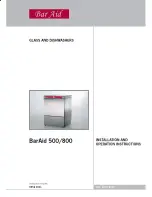
Laundry
en
25
■
Empty any pockets. Remove any
foreign objects.
■
Remove metal parts (paper clips,
etc.).
■
Trousers, knitwear and knitted
textiles, e.g. jersey garments, T-shirts
or sweatshirts, should be turned
inside out.
■
Ensure that underwired bras are
appliance-washable.
■
Wash delicates in a net or bag
(tights, underwired bras, etc).
■
Close zips, button up covers.
■
Brush sand out of pockets and
collars.
■
Remove curtain fittings or include in
the net/bag.
Preparing laundry for drying
Note:
To ensure an even drying result,
sort the laundry according to the:
■
Type of fabric
■
Drying programme
■
Care symbols which are indicated on
the care labels.
Only dry laundry which is labelled
“dryer-proof” or which has the following
care symbols:
■
a
= Dry at normal temperature
(
Intensive Dry
5
)
■
`
= Dry at low temperature
(
Gentle Dry
‰
)
The following textiles must not be dried:
■
b
= care symbol “Do not dry”
■
Wool or textiles containing wool.
■
Delicates (silk, synthetic curtains).
■
Textiles which contain foam rubber
or similar materials.
■
Textiles which were treated with
flammable liquids, e.g. with stain
remover, petroleum ether, thinners.
Risk of explosion!
■
Textiles which still contain hairspray
or similar substances.
Notes
■
Before drying, hand-washed textiles
must be spun at the appropriate spin
speed.
■
Before drying, spin at the optimum
speed. A spin speed of more than
1000 rpm is recommended for
cotton, more than 800 rpm for easy-
care textiles.
■
Do not iron washing immediately
after drying. It is recommended to
roll the washing up first to distribute
residual moisture evenly.
■
To ensure a good drying
performance, quilts, terry cloths and
other large textiles should be dried
separately. Do not dry more than 5
terry cloths (or 4 kg).
■
Do not exceed the maximum load.
















































